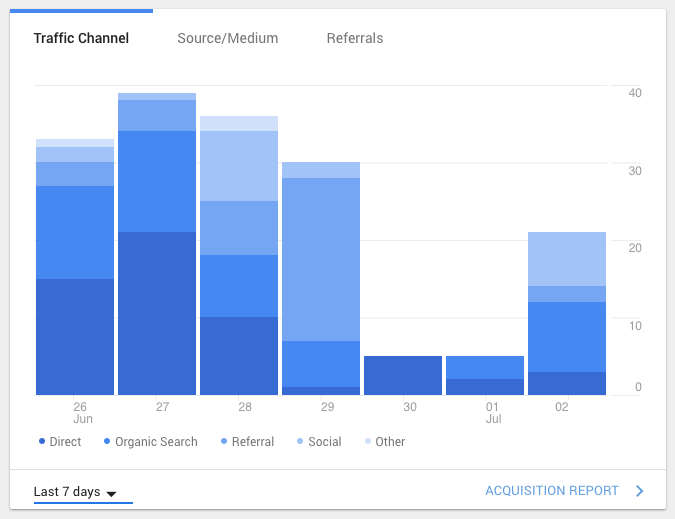How to measure marketing campaign success
You’ve just run what you think was your most successful advertising event ever but how do you actually measure marketing campaign success?
Marketing is one of the biggest and most important expenditures that any company will make. Being able to accurately measure how your advertising and digital marketing campaigns have gone is the key component to optimising any process – so you need to know what are the key metrics to take note of.
The most obvious is clearly your ROI (Return on Investment) because spending £1k on a campaign which brings in £500 of revenue or sales isn’t a marketing campaign success by any measure. But if you spent £1,000 on your campaign and generated £5k in sales, you’ve hit a 400% ROI – which is great in anyone’s book.

Continually measure your digital marketing results
There are multiple ways to measure your ROI, from cost per campaign, cost per sale, cost per click if you’re working with digital advertising. Each of these will give you a different insight into how your audience reacts to what you put in front of them.
Intechnic has a great blog which examines each of these different types of ROI metrics which is worth a read.
Where do you start?
First things first. Read our What Makes A Successful Marketing Campaign blog and plan out your advertising strategies. Decide what your goals are and which platforms you’re going to use to achieve them.
Inbound marketing is the default these days – it’s rare to send out a salesman “into the wild” to drum up conversions, although that does still happen in some industry marketplaces. So how do we define inbound marketing?
Cleverism – a recruitment agency focusing on tech and entrepreneurs – describes it as such:
Inbound marketing strategy is designed to lure customers to your business by such means as attracting people to your website or by the effective placement of ads on popular social media sites.
This type of approach is much more subtle than outbound marketing in practice. Here are some typical inbound marketing strategies:
- Email marketing campaigns;
- Website based contact (includes both web content and SEO);
- On-site/In-person interactions;
- Social media placement.
This makes measuring marketing campaign success much easier as all the necessary metrics are at your fingertips with the right tools on hand.
What metrics to use?
Everyone in marketing has been there at some point. Google Analytics is the most popular in the industry but it’s a complicated tool to use if you’re just starting out or if you’re wanting to get deeper into just what your traffic is saying.
There’re dozens of metrics being recorded by GA. So one of the first things you have to work out is where you should be looking and which of those metrics you should be tracking.

The most obvious, and the ones usually associated with social media traffic statistics are the following:
- Traffic by social channel – this gives you information on your most valuable social media platforms and allows you to identify changes
- Social media traffic – identifies all social network traffic so you can compare with email or other forms of digital marketing
- Landing Pages – easily identify which dedicated pages are most shared on social media
- Multi-Channel Reports – highlights the type of traffic you’re getting, is it organic or from paid campaigns for example
- UTM campaign results – what happens when you use an additional UTM parameter on a web address so you can identify the source i.e. /?utm_source=twitter&utm_medium=tweet&utm_campaign=socialmedia
But with these metrics, you also need to make sure you’re filtering out your own internal traffic (and that from your mum and other friends – unless, of course, they’re going to be signing up for whatever you’re offering!). You also need to set up blacklists to get rid of any referrals from dodgy sites (and they seem to be increasing on a daily basis) and look at methods of filtering out bot referrals.
Note: measuring and learning how to gain social media followers is worth doing for brand exposure and increasing the likelihood of gaining traffic, but in this article we’re focussing on on actionable, measurable and direct results from your marketing campaign.
Veracity helps you measure success
Of course we’re going to tout our own product. But, as a digital marketing agency in our past life, we also understand the very real frustrations in having to report back to clients on how their campaigns have gone.
The latest version of Veracity comes with a raft of new features and upgrades to make reporting your digital marketing results easy. All your marketing activity, irrespective of platform, is in one dashboard.
You can instantly see which channels are directing the most traffic to your website, you can see what percentage of your visitors are genuine and which are bots, you can identify how visitors behave on your website.
Veracity gives you an overview of all your digital marketing activities with top-level ROI and marketing result reporting – instantly see what is working, and why. Coupled with Veracity’s all-in-one click fraud protection platform, you can get the most from your PPC and paid ad campaigns by preventing bot clicks that can cost you up to 66% of your ad spend.
Tracking your campaign data
The campaign’s up and running, you’ve done the planning for how you’re going to track and measure, as well as set the goals for it, so now you need to begin tracking how your efforts are going.
It’s worth bearing in mind that immediate sales or sign-ups aren’t the only effective outcome for a marketing campaign. For email campaigns, this can include engagement – how many people interacted with what you sent out. Opens and clicks are important metrics to consider, as are the unsubscribes.
High open rates mean the content is appealing, but if they’re low, you need to look at changing up the subject line and call to actions. Good click rates mean people are interested enough to follow the breadcrumb trail you’re leaving and to visit your website.
Unsubscribes speaks for itself. If people are turning away from your newsletter or campaigns, something may be going wrong. However, bear in mind there will always be a percentage of people who are no longer interested. What you need to track here is whether your unsubscribe rate is rising. MailChimp is a good place to look for these metrics
When it comes to social media you can again rely on the inbuilt analytics that most of the platforms include but vanity metrics – the likes, shares and comments – are only one side of the picture.
You really need to know whether your efforts are driving traffic because, without people landing on your website, you’re not going to convert the likes into actual financial results. Tools like GA and Veracity will definitely help here. Look at what content gained the most engagement, check to see which post is driving traffic but also make sure you can see where that traffic converts into sales.
Talk to your customer service team, your sales reps, they’re the ones on the front line who are speaking to the people already spending money with your business or brand. They will have invaluable knowledge of those customer personas.
In conclusion
No matter what type of campaign you run and what goals you set, measuring the ongoing activity is a vital component in making sure you’re successful. It doesn’t have to be daily monitoring, checking the campaign weekly can be enough depending on what you’re offering.
Ultimately though, measuring your marketing campaign success comes down to two things:
- Driving sales and leads. You can measure this in many ways – revenue, contribution to the pipeline, in sales opportunities created, or by any other metrics which work for your business and brand.
- Your campaign should begin with the end in mind. If you want to measure the success of a campaign, define your goals for it from the beginning.
Define its objective, target audience, and user context since together these variables determine your metrics. Based on these inputs, create specific calls-to-action and associated landing pages that yield trackable results
Measuring marketing campaign success is a must. It takes a lot of the guesswork out of it and, once you have a formula that works, you can fine tune the details and ensure you’re making data-driven decisions on budget and spend for any of your advertising efforts.
Don’t forget to read our What makes a successful marketing campaign? blog on getting the key components for your campaigns right in the first place.
Get started with Veracity
Start your journey by having the best available data. At Veracity we’ve been champions of transparent marketing data since our foundation. With click fraud detection and mitigation across search and social, Veracity feeds other parts of the Martech stack with better quality data, to enable improved analytics, decision-making and results.
NOTE: Updated March 2022.


